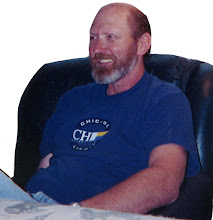I was born in Portland, Ore., met my wife there, have relatives who live there and have visited many times over the years. But I no longer recognize the city I once loved to visit, the city with bright lights, clean streets and busy people. The last time I visited, the sidewalks and parks were jammed with homeless people, alleys strewn with garbage, and businesses boarded up. I watched the news during months of rioting in which my church and many other buildings were covered with plywood to protect them from window-smashing looters who emerged at night to raise hell.
On October 1 of this year, the New York Times published a story in which a reporter and photographer followed a Portland security guard on his rounds as he encountered drug addicts, psychotic people, overdose deaths and foiled an attempted kidnapping as a crazy woman tried to snatch a child she insisted was hers. His 911 calls were answered by a recording and were sometimes disconnected, as overwhelmed police officers struggled to keep up.
So what changed in the last few decades? Drugs. Apathy. Stupid legislation. Degradation.
Oregon, described in a PBS News Hour episode as “On the leading edge of drug decriminalization,” decriminalized marijuana in 1973,and legalized medical marijuana in 1998. In 2011, The Global Commission on Drug Policy decreed that “The global war on drugs has failed,” which gave permission for states to throw up their hands gut their drug enforcement efforts and follow Oregon’s lead, reducing penalties, legalizing marijuana for medical and recreational use, opening so called “harm reduction” centers in which addicts could access naloxone for overdoses and could shoot up with clean needles without fear of arrest, and planning to use taxes on marijuana sales to fund mental health and drug treatment.
Oregon continued its “leading edge” position, passed measure 110, decriminalizing the possession of small amounts of hard drugs such as heroin, methamphetamine and cocaine. Also in 2020 Oregon voters approved measure 109, the first measure in the United States that established a regulatory framework for the use of psychedelic mushrooms.
I was at university in the 1960s so yes, I experienced a thriving drug culture, and yes, I did inhale, but the harsh 3 Percent THC marijuana seeds and stems of the 1960s have evolved into something cultivated, much stronger and available legally from thousands of weed shops on street corners. The grim lessons of LSD, and other hard drugs have been forgotten by the present generation, and the tie-dyed hippies of the 1960s have been replaced by urine-stained homeless drug addicts junking up many cities such as Seattle, Portland and San Francisco.
Read the NYTimes story on Portland and you can see that the security guard treats the homeless compassionately, gives them cigarettes, works to de-escalate conflicts and problems, and one can also see that those people are not generally intent on damage. They are however, “on something” which puts them beyond the bounds of acceptable behavior. In pursuit of humane treatment, in making drug addiction an “illness” instead of a criminal act, we are losing our cities to the insane, the destructive, the addicted and the degenerate. Ordinary people have a right to walk the sidewalks without being accosted, without being hassled or screamed at, without being forced to walk in the street to avoid needle-strewn trash and human feces.
And one more thing: It doesn’t help when Oregon Public Broadcasting reported on efforts to rescind Measure 110, the headline read “Efforts to recriminalize drugs again, supporters include Oregon’s richest businessmen,” makes it into a class war where once again the “fat cats” are stepping on the little guys. It doesn’t take a fat wallet to look around and see what’s happening to our cities and to Portland, all it takes is a walk in the park with eyes open. Drug addiction is slavery. Pushers and legislators are the enablers.
Sunday, October 8, 2023
Subscribe to:
Post Comments (Atom)


No comments:
Post a Comment